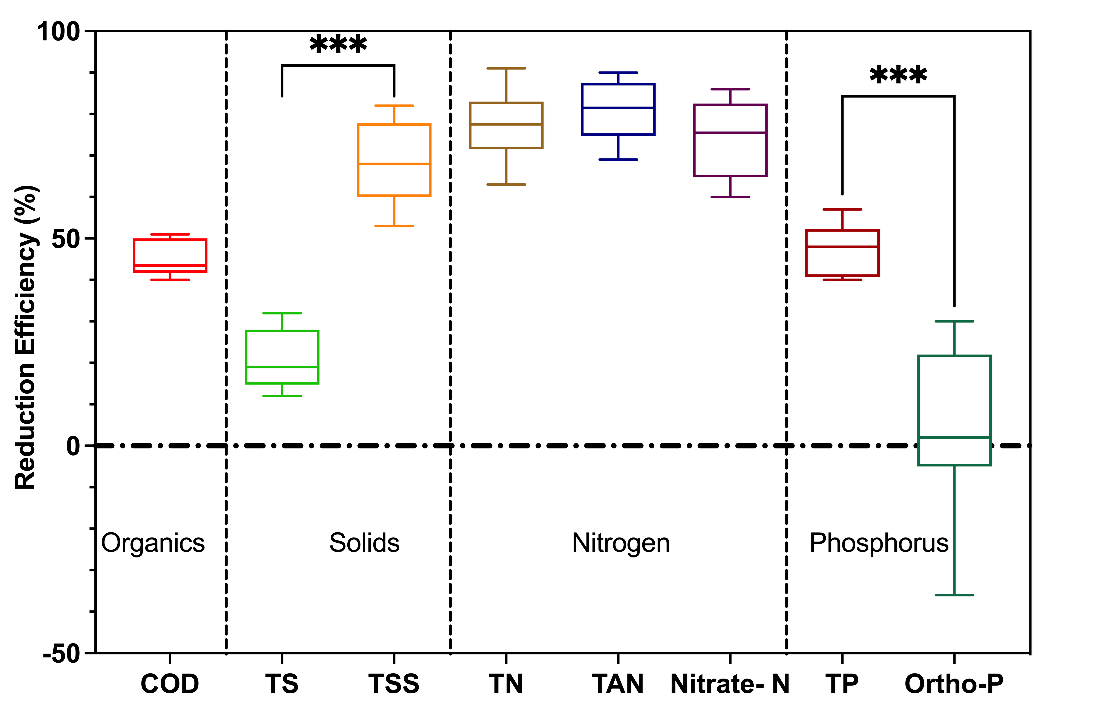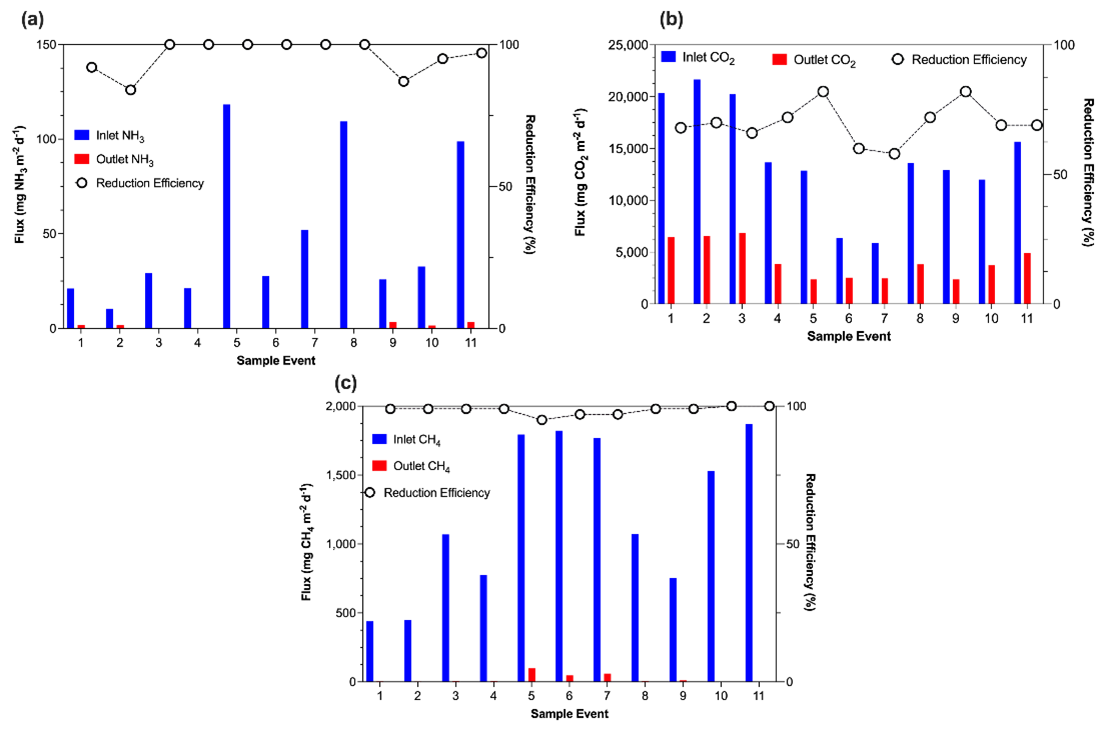Purpose
Due to increased demand for milk and milk products, the dairy industry has grown tremendously over the last several decades. This has resulted in an increase in the production of dairy manure. In recent years, the industry has also seen significant changes, such as a decrease in the number of dairy farms but an increase in the size of individual operations, and regional concentrations of dairy operations. Because of the regional concentrations of large dairies, large volumes of manure are produced in small geographical areas, raising concerns about the effects on local air, land, and water resources. Various dairy manure management technologies have been suggested ranging from anaerobic lagoons to membrane filtration. Many of these technologies, however, are not considered economically viable due to the high energy and labor requirements for sludge management.
Vermifiltration is on the other hand an emerging low-cost manure management technology, which is an aerobic wastewater treatment system that employs a community of microorganisms and earthworms in a filter bed media. The purpose of this research was to assess the effectiveness of this technology in reducing solids, organic strength, and nutrients (nitrogen and phosphorus) in dairy wastewater from a dairy operation with a manure-flush system. The treatment’s ultimate goal was to: (1) reduce the nutrient load of the wastewater so that it could be recycled via irrigation on nearby land, (2) recycling to flush fresh manure from the barns, and (3) recover the nutrients in the form of earthworm biomass and vermicasts.
What Did We Do
In this study, we assessed the efficacy of a vermifilter for treating dairy wastewater in terms of effluent quality and potential air emission reductions. For these tests, a pilot-scale vermifilter unit (Fig 1) was installed on a commercial dairy and monitored for 6 months. Additional lab-scale (Fig 2) studies looked into the effects of earthworm density, organic loading rate, and hydraulic loading rate on the vermifilter’s performance. Total solids, total suspended solids, chemical oxygen demand, total nitrogen, total ammonia-nitrogen, nitrate-nitrogen, total phosphorus, and orthophosphate were among the wastewater parameters of interest. A closed-loop dynamic chamber method was used to measure potential gas emissions (ammonia—NH3, methane—CH4, carbon dioxide—CO2, and nitrous oxide—N2O) from these samples. Lab scale Plexiglass vermifilters were also used to study the effect of earthworm density, organic and hydraulic loading rates.


What Have We Learned
We observed that reduction efficiencies of up to 90% of inlet wastewater organics, nutrients, and solids can be achieved by the vermifilter (Fig 3). These results showed that vermifiltration has a high potential for reducing the concentrations of organics, nutrients, and solids in dairy wastewater. We also noted that the vermifilter system reduced emissions of gases by 84 – 100% for NH3, 58 – 82% for CO2, and 95 – 100% for CH4. Nitrous oxide emissions were mostly undetectable. We also learned that the vermifilter system reduced the global warming potential of untreated dairy wastewater by up to 100% and demonstrated the ability to generate carbon credits while maintaining a low carbon footprint. We further learned that vermifiltration at earthworm densities of 10,000 and 15,000 earthworms m-3 is best for treating dairy wastewater in terms of organic matter, nutrients, and solids concentration removal.


Future Plans
To enable effective scale-up, additional studies of a full-scale vermifilter system’s techno-economic and life cycle assessment are required. The techno-economic analysis will serve as a foundation for addressing vermifiltration optimization processes, as well as determining the system’s cost implications and economic performance. The life cycle assessment, on the other hand, will reveal potential environmental impacts associated with a full-scale vermifilter system.
Vermifiltration uses a variety of microbial pathways for nutrient conversion, including aerobic and anaerobic organic matter stabilization, ammonification, nitrification, immobilization, and denitrification. These pathways are heavily reliant on the system’s dominant microbiota, which has an impact on the system’s treatment efficiency. Genomic sequencing is required to better understand the microbiota present in dairy wastewater streams and vermifilter units, as well as how the introduction of earthworms affects the microbial communities. This will allow us to optimize the treatment and thus increase the vermifilter’s efficiency.
Authors
Gilbert Miito, Post Doctoral scholar, University of Missouri
gilbertjohn.miito@wsu.edu
Additional Authors
-Pius Ndegwa, Professor, Washington State University
-Femi Alege, Post Doctoral Fellow, University of California Berkeley
-Joe Harrison, Professor, Washington State University
Additional Information
Publication: https://www.sciencedirect.com/science/article/abs/pii/S2352186421002960
Acknowledge
Biofiltro, Organix Inc, Washington State University, Washington State Department of Agriculture
The authors are solely responsible for the content of these proceedings. The technical information does not necessarily reflect the official position of the sponsoring agencies or institutions represented by planning committee members, and inclusion and distribution herein does not constitute an endorsement of views expressed by the same. Printed materials included herein are not refereed publications. Citations should appear as follows. EXAMPLE: Authors. 2022. Title of presentation. Waste to Worth. Oregon, OH. April 18-22, 2022. URL of this page. Accessed on: today’s date.

